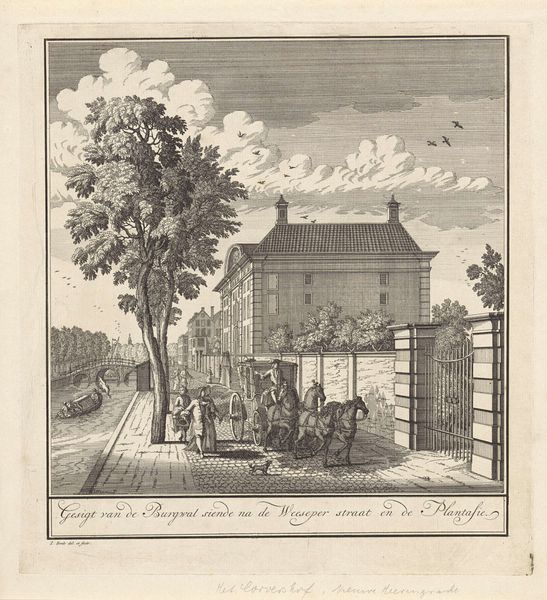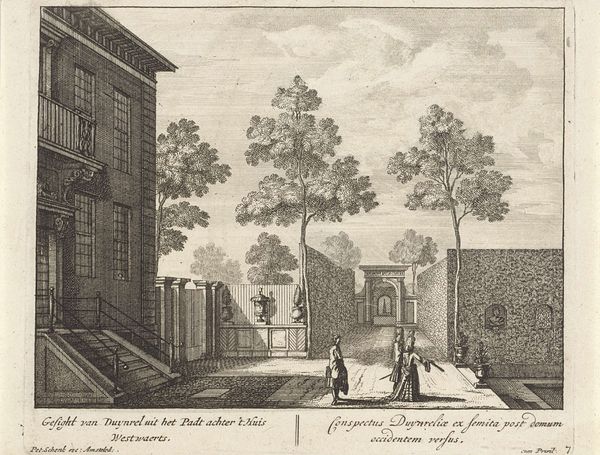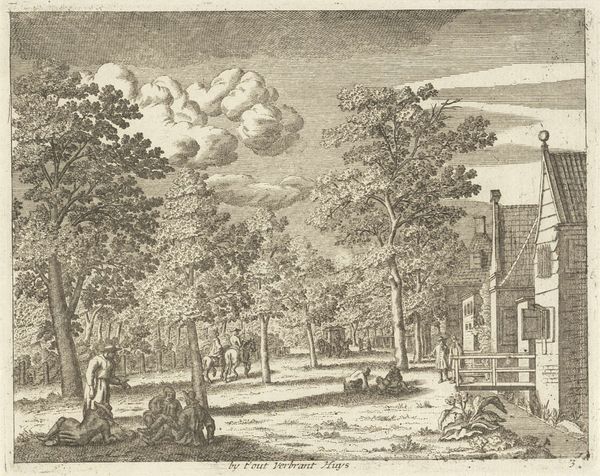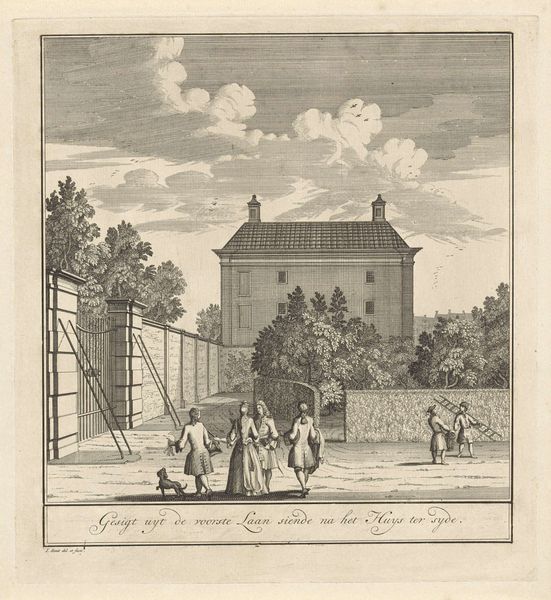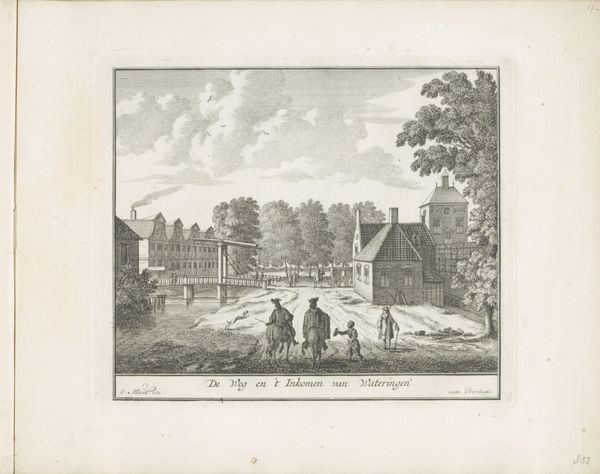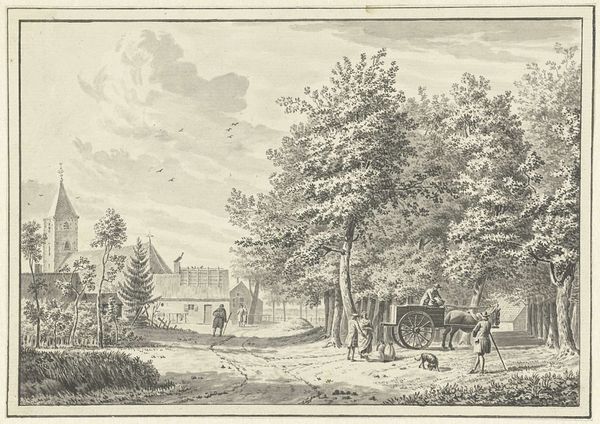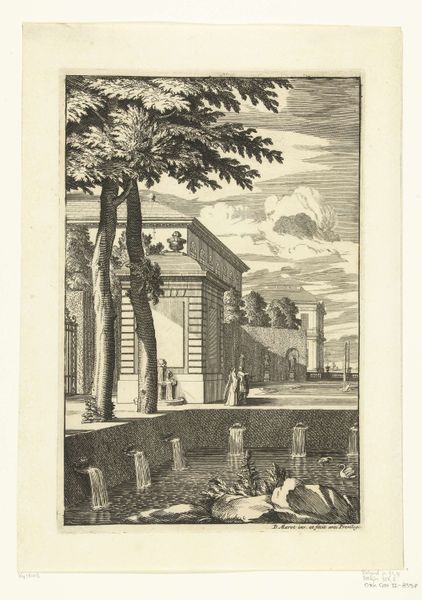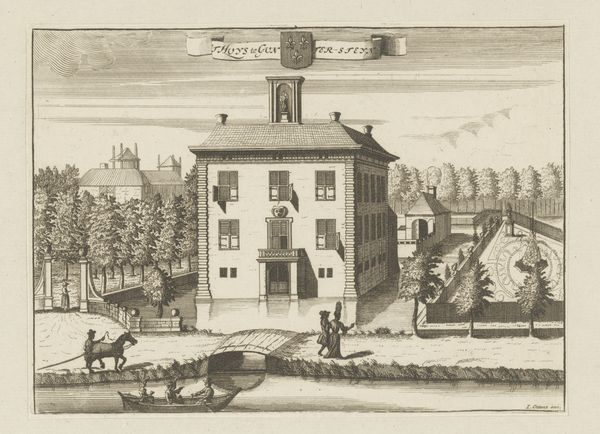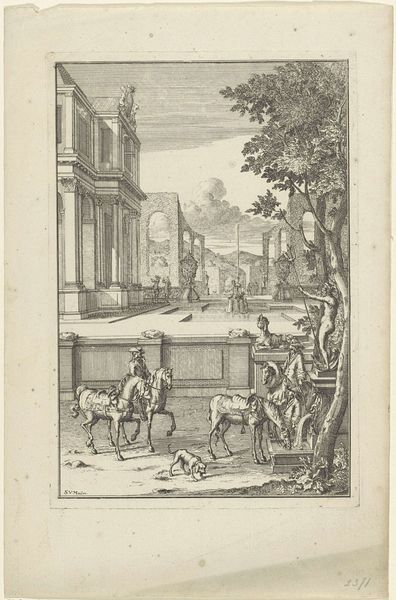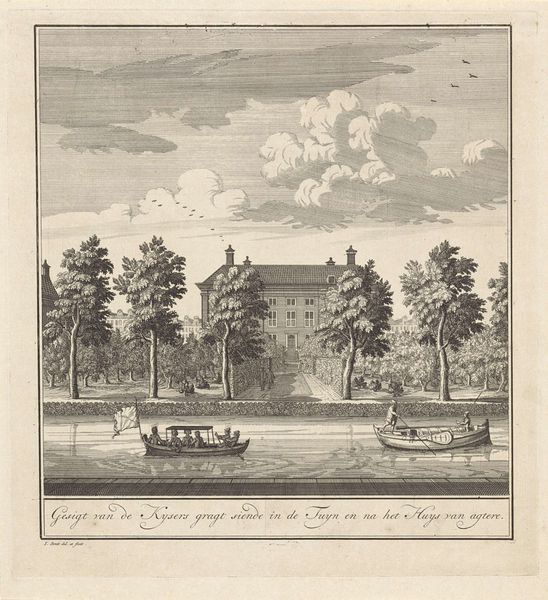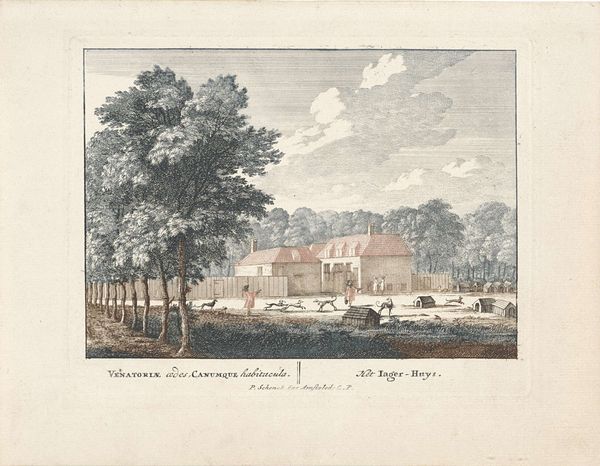
Gezicht op de achterkant en een deel van de tuin van het Corvershof te Amsterdam 1723 - 1748
0:00
0:00
janismit
Rijksmuseum
print, engraving
#
baroque
# print
#
landscape
#
perspective
#
cityscape
#
genre-painting
#
engraving
Dimensions: height 264 mm, width 246 mm
Copyright: Rijks Museum: Open Domain
Editor: Here we have "View of the back and part of the garden of the Corvershof in Amsterdam," an engraving by Jan Smit made sometime between 1723 and 1748. It's so detailed and calm, a snapshot of daily life, but very ordered. What do you see in it? Curator: I see a carefully constructed representation of power and social control, carefully disguised as a genre scene. Look at the Corvershof, an old men’s almshouse. It looms large, a structure literally built on the backs of the vulnerable. Notice how the people working on the grounds are smaller and less defined. The almshouse creates a backdrop for the leisure of the three bourgeois strolling in the front, separating them from the less-fortunate residents of Amsterdam. Who does the image serve? Who is invited to look at this image and reflect upon this social hierarchy? Editor: That’s a stark way of looking at it, I hadn't considered it like that. I was focused on the trees, the perspective… the atmosphere. Do you think the artist consciously intended that message? Curator: Perhaps not consciously, but art doesn't exist in a vacuum. Smit, as a member of that society, would have been influenced by its prevailing power dynamics. We can still appreciate the skill, but also critique the underlying social messages embedded within it. Consider also the print medium. Who could afford these? The rising merchant class of the Dutch Golden Age, the very audience that reinforced these structures. Does it begin to paint a clearer picture? Editor: It does. So, it's not just about what's in the image, but who the image is *for*, and what it subtly reinforces about society at the time. Curator: Precisely! It invites us to look closer at how power operates through seemingly innocuous everyday scenes. We can question the image and its message as opposed to passively admiring it, considering it 'of its time'. Editor: Thanks, I will keep these ideas in mind during my next visit to the Rijksmuseum. Curator: And always remember that art is more than just aesthetics.
Comments
No comments
Be the first to comment and join the conversation on the ultimate creative platform.

